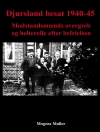This book explores the development of tactical air power in Britain between 1940 and 1943 through a study of the Royal Air Force’s Army Co-operation Command. It charts the work done by the Command during its existence, and highlights the arguments between the RAF and Army on this contentious issue in Britain. Much is known about the RAF both in the years preceding and during the Second World War, particularly the exploits of Fighter, Bomber and Coastal Commands, yet the existence of the RAF’s Army Co-operation Command is little-known. Through extensive archival research, Matthew Powell maps the creation and work of the RAF’s Army Co-operation Command through an analysis of tactical air power developments during the First World War and inter-war periods, highlighting the debates and arguments that took place between the Air Ministry and the War Office.
สารบัญ
Introduction.- 1. Army Co-operation at Home and Abroad.- 2. Tactical Air Power and the Battle of France, 1940.- 3. The Creation of Army Co-operation Command.- 4. The Work of Army Co-operation Command, 1941.- 5. The Beginning of the End of Army Co-operation Command, 1942.- 6. The End of Army Co-operation Command, 1943.- Conclusion.
เกี่ยวกับผู้แต่ง
Matthew Powell is an independent scholar who has taught at the University of Birmingham, UK. He has published on Army Co-operation Command in Canadian Military History, Air Power Review and the British Journal for Military History.












